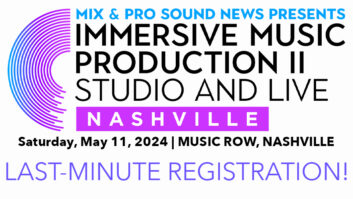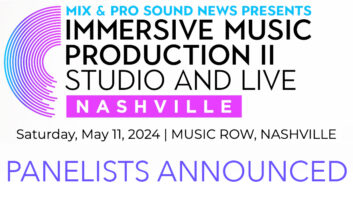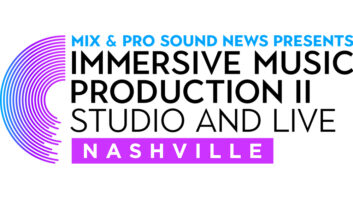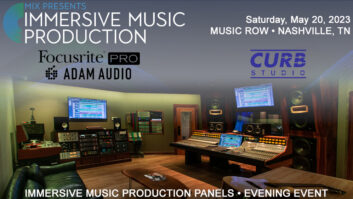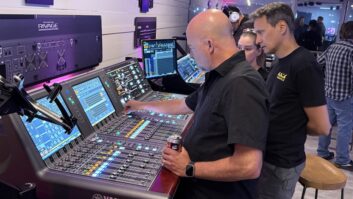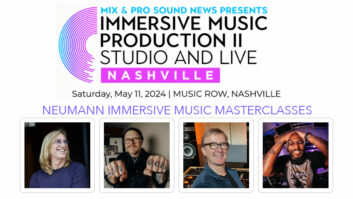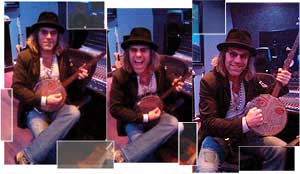
“Big Kenny” Alphin, of Big & Rich fame, in his inappropriately named Last Dollar Studio
Welcome to the University of Creativity,” says Kenny Alphin, best known as Big Kenny, first of country duo Big & Rich and lately the author of genre-skewering solo album The Quiet Times of a Rock and Roll Farmboy. “These are the laboratories of peace, positivity and tranquility.”
Having said that, Alphin smiles and opens his arms, simultaneously acknowledging the campy nature of his proclamations and underscoring a genuine sincerity of intent. With the help of pros, including famed acoustician and designer Michael Cronin and engineer Chris Stone, Alphin built The Last Dollar Studio on his Nashville property, and since the studio’s summer 2008 completion he has been working tirelessly there on audio, visual and combo projects.
“They’re working around the clock,” Cronin says. “They’re like Oompa Loompas over there, man.”
Last Dollar is an 860-square-foot 5.1 mix room, with a 600-square-foot tracking room stacked on top of it. The studio’s centerpiece would be the API Legacy Plus console, except that there’s really no such thing as a centerpiece at Last Dollar. There is original art on the walls, there are numerous instruments around, there are massive, custom-built ATC monitors in the wall, and there are couches and kibitz-spots that make the tracking room as viable for parties as for recording.
“The whole thing started out that I was going to build a church,” Alphin says. “I wanted it to be solid: slate roof, concrete walls and brick. And for a studio, it couldn’t work any better than that. Now, it looks like a church, but it’s a place to create, which makes it feel even more like a church to me.
“I’m on the road so much, and when I get home I like to be around my family,” he continues. “I was raised on a farm in Virginia, and I could always go out to the shop and be with my dad. I learned a lot from him and all the men around him, and it’s the same thing here. Creative people are here all the time. But the main thing for me is that I get to have a regular life.”
“Regular” is relative. Last Dollar is as idiosyncratic a studio as exists in Nashville. True, the mixing room is based on the Cronin-designed Studio F at Blackbird, where Big & Rich often recorded. But the upstairs tracking room is highly unusual in Music City, and the vibe is unlike anything in town. “It’s a pretty trippy place, all the way down to the lighting,” Cronin says. “There are 16 million variations of color in the lighting. It’s any color imaginable, except for white.”
During the construction phase, Alphin’s background as a general contractor aided him in elaborating on ideas with Cronin. Though he owns substantial property on Nashville’s west side, Alphin wanted to build up rather than out, and he needed to make sure that his neighbors weren’t disturbed by any amped-up sessions. Cronin had built several “stacked studios,” usually for post-production work, and he determined that Alphin could achieve adequate isolation by using a floating concrete system. Video cameras upstairs feed images of the recording musicians to a large screen in the control room, and the whole thing is tricked out to allow (and encourage) Alphin to indulge his frenetic creativity, which includes film and animation efforts.
“It will ultimately become my personal broadcasting facility,” Alphin says. “And it’s also a space that I can come in and listen to music in its most pristine form. I looked at it like a farmer buying a combine: ‘Is this the right horsepower? Will it last me for the next 10 years?’ The connection between artist and fan is getting closer, and it’s going to get to the point where I can be making music and you’ll be listening to it and watching as it is recorded, live. We can do that here.”
The control room has three isolation booths, and a piano and drum set that stay miked up (Alphin writes and demos hundreds of songs each year, so there’s not much down time). Alphin records to Pro Tools HD, usually going through a Millennia HV-3D preamp designed to capture subtlety and detail rather than to color the sound of drums, guitars or vocals. The studio isn’t open to the general public, but Alphin’s friends often use it when he’s on the road. “I don’t want to be in the studio business,” he says. “This is all to inspire, and to be a meeting place where people share ideas, learn from each other and lift each other up.”
Cronin says he has lately seen an uptick in the building of custom, private studios. In late 2009, he was busy working on one for Taylor Swift, and he has built studios for Sheryl Crow, producer Byron Gallimore and hit songwriters Chris Lindsey and Aimee Mayo. “Some of these people are married with kids, and all of them work hard, constantly,” Cronin notes. “They want to be able to stay creative when they’re at home, without disrupting their home life. Plus, it’s hard to create when you’re paying someone else by the hour. But you have to be really doing business to pull this off. This ain’t a toy. This is a world-class studio. This is the full monty.”
Peter Cooper can be reached at
.

